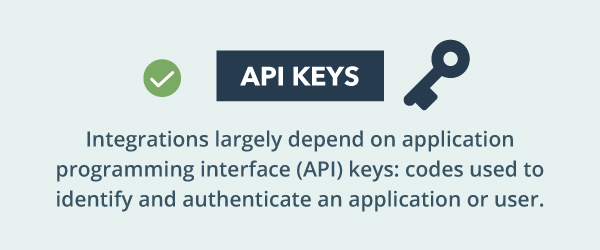In today’s marketing landscape, 68% of marketers consider paid advertising to be “very important” or “extremely important” to their overall marketing strategy. While increasing organic traffic should still be a focus of your marketing efforts, there’s no denying that paid media makes it easier for consumers to find what they need online.
That being said, it’s hard to surrender your marketing budget in pursuit of the coveted return on ad spend without first knowing some paid media best practices. We’ve rounded up the four most hard-hitting paid media questions we receive as a digital marketing agency.

1. Should We Be on X Platform?
With the number of paid media platforms, and the overwhelming amount of literature available on the internet, it can leave marketers wondering if they’re missing out on opportunities on another platform.
We like to remind our clients of the goals that we developed together during onboarding. Those initial goals are our true north when it comes to measuring results and making decisions like adding additional platforms. For example, if the true north goal is brand awareness, your ads’ function should be to reach users and intersect with them where they frequent. Users may have an interest, but are unfamiliar with the brand or product. Therefore, Google Search wouldn’t be an ideal platform for this goal as it’s an intent-based platform. It is fueled by demand, i.e. search queries, and it excels in driving conversions and leads.
Another important consideration is budget. It’s critical to evaluate the limitations of each platform and whether additional ad dollars are needed to receive the desired outcome. Additionally, it helps to visualize what the daily investment will actually look like.
Further reading on our blog: How to Choose the Right Paid Media Strategy for Your Goals.
2. How Much Budget is Enough?
Naturally, many marketers are concerned about whether they have enough budget set aside to achieve their desired return on investment from their advertising dollars. We like to quantify this in terms of cost-per-goal (CPM, CPC, CPA)—is there enough budget to actualize our goals? If so, we’re in the clear. If not, we may need to increase the budget, reallocate funds, or have a deeper conversation.
Another way to think about an ideal budget range is in terms of volume. The volume of results needs to be ample for goals, testing, and reporting. If we compare paid media to a scientific experiment, our goal is to continuously be finding innovations and points of optimization. So we ask questions, and run tests based on metrics like click-through rate, conversion rate, return on ad spend, and more. We then run analysis within reports where we pull the data together to evaluate what’s working. If the budget can’t cover all three steps, we’ve only completed a partial experiment.
3. Can You Integrate with…?
Often, clients ask us whether we can integrate with X, Y, or Z. It’s a good question—integration and automation are essential within digital strategies—but we also like to ask follow-up questions to get to the root of this query.
Questions that help us dig deeper include asking about your technology stack. Are you using a CRM system such as Salesforce or Hubspot? Do you use a tool to help visualize data such as Google Data Studio, Tableau, or Dataroma? Also, what can this integration do for us? What set-backs, if any, come with said integration? What problem are we solving for?
Integrations largely depend on application programming interface (API) keys: codes used to identify and authenticate an application or user. It’s important for us to function as an extension of your team to create value instead of disruption. Because of this, it’s imperative to take into consideration what the current tech stack looks like, identify any challenges, and research a solution prior to launching ads.
4. Are these good results?
Measuring whether paid media results are “good results” depends on many factors. When using comparison data or benchmarks, if first-party data, information collected directly from your audience and customers, is available, it should be referenced first. First-party data is the most reliable data source as it is directly aligned to the brand and its current paid media efforts.
Benchmark reports are also regularly published from a variety of ad platforms such as Hubspot, AdAge, and Twitter. These reports tend to categorize data by platform and industry, two primary factors to consider when interpreting results. For instance, the Facebook algorithm is not static and favors personalization. This means that results may not be immediately evident, and additional creative testing may be required to discover what resonates with your audience.
Beyond platform and industry, there are many similar caveats to consider when measuring against your benchmark. These include:
- Budget
- Creative
- Campaign Flight Timing
- Seasonality
- Targeting
- Ad placement
- Ad experience
- Digital experience
- And more!
Because of all of these variables, it’s important to work with a paid media expert who can interpret the data and clue you in to how your campaigns are performing with all of these factors at play.
Paid Strategy That Converts
Don’t know where to start with your brand’s paid media strategy? We can help you strategize, build, and optimize paid media campaigns across almost all digital platforms.
When you partner with us, we ensure your ad dollars are being maximized and your ad strategy is working effectively as you grow and scale your business. Contact us to learn more about how we can help your brand succeed.

